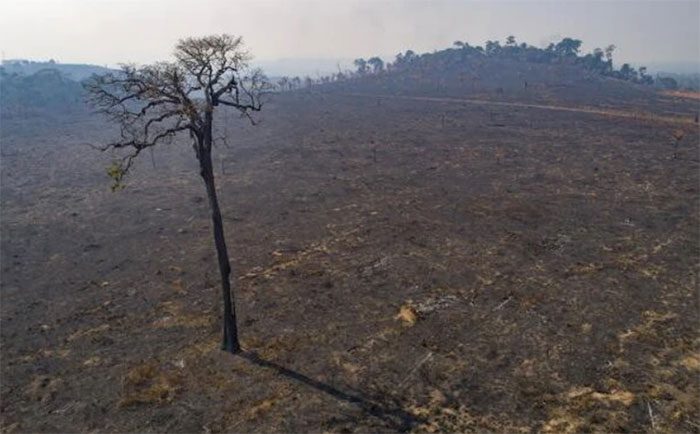The World Wildlife Fund (WWF) warns that the world is “not making progress towards global forest goals.”
On October 23-24, WWF released the report “Forest Assessment”, which announced the rate of deforestation worldwide in 2022, along with the report “Forest Protection Roadmap 2023”, outlining plans for forest protection through 2030.
These reports highlight that the world is veering off track from the goal of protecting and restoring forests by 2030.
The newly released “Forest Assessment” report found that 6.6 million hectares of forest were destroyed in 2022, including 4.1 million hectares of primary tropical forest, meaning that 96% of deforestation occurred in tropical regions.

Deforestation and forest degradation can lead to global climate disasters. (Photo: AP).
The tropical climate region of Asia is the only area with hope of achieving no deforestation goals.
Fran Price, the Global Forests Lead at WWF, warned that failing to meet global forest goals will have serious consequences, especially as deforestation continues at alarming rates despite commitments from governments and businesses.
Price emphasized that forests are crucial for achieving global objectives such as the 2015 Paris Agreement on climate change, the Global Biodiversity Framework, and the Sustainable Development Goals (SDGs).
If continued, deforestation will undermine climate stability, water cycles, agricultural economies, food security, livelihoods, and human societies.
Price urged all parties to make changes to ensure a better future for the planet and future generations. She highlighted that the world has lost an area of tropical forest equivalent to the size of Denmark.
Widespread deforestation and forest degradation in the three largest tropical forest basins—the Amazon, the Congo, and Southeast Asia—could lead to global climate disasters.
WWF added that without urgent action, forests are beginning to become sources of CO2 emissions rather than absorbing emissions, under pressure from extreme weather events and increasingly hot and dry climate conditions.
Each year, forests receive only $2.2 billion in public investment and care. In contrast, government funding for environmentally harmful projects is at least 100 times higher than investments in forests.



















































